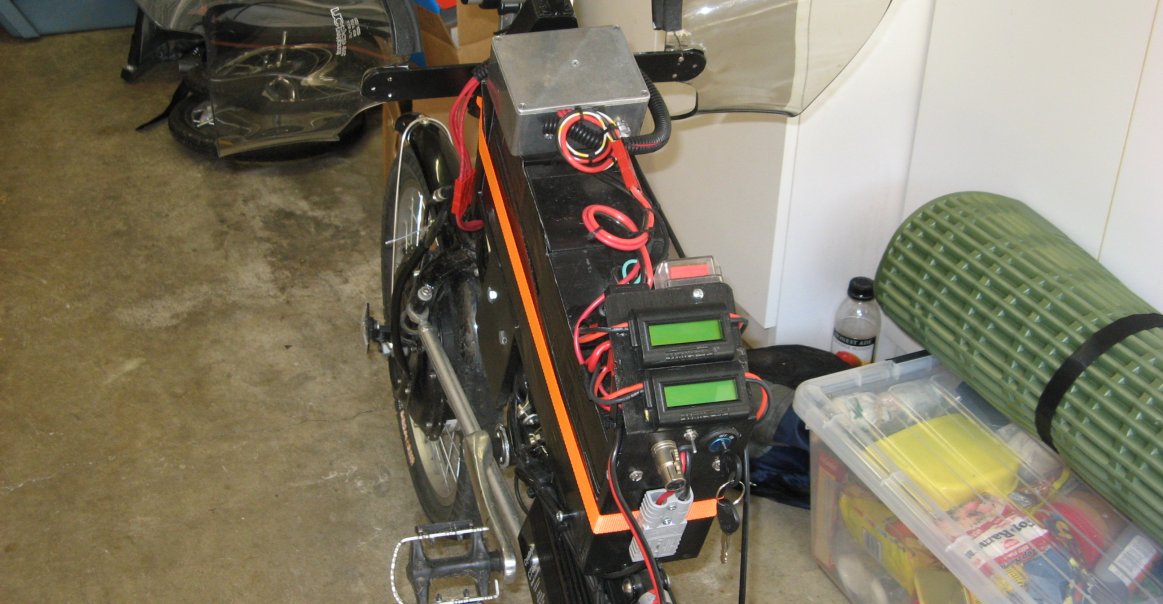



The bike started life as a Sun trike. I needed the stability and load-carrying capacity of this model because I knew the panel would make it top-heavy. The drive system is a Crystllyte Phoenix Brute model: 48 volt. The motor is integral to the front wheel assembly. Controls are on the handlebars; throttle on the right and cruise control on the left. The motor controller is mounted on the left side of the frame (rectangular box).
The batteries are mounted on the bike frame between the rider's legs so that weight distribution is appropriate (low and forward). The batteries are 12 amp hour AGM units (4 ea.) and weigh about 40 lbs in aggregate. The panel is mounted to a welded steel frame that is cantilevered from the rear axles. A front shock absorber (actually a modified screen door closer), keeps the front from bouncing too much. In front of the rider is a control console that features full input and output metering so I know exactly how much power the batteries have supplied, the remaining capacity, and how much has been replaced by the panels (or regen brake) at any point in time. A Morningstar PWM controller is mounted under the panel and does a good job. The panel is a Sanyo HIT model that is somewhat non-standard but was the right size, has about the highest efficiency available, and was the exact correct voltage for the 48-volt nominal battery pack. At the time, there was no available MPPT controller for a 48-volt battery in a small footprint.
I'm particularly proud of the regenerative braking system for the bike. This was fairly tricky to design since it needed to take the output from the motor (at any speed) and boost it up to the battery voltage. It works very well and I have measured between 5 and 15% power recovery depending on the riding profile and terrain. It also helps a great deal on long downhill runs to keep the brakes from overheating. I have measured over 600 watts of regenerated power when going down a fairly steep hill. The regen brake lever is on the right handlebar, separate from the regular disk/shoe brakes. It has a mechanical linkage to the silver regen box located on top of the battery array.
The bike weighs over 200 lbs and I'm about 210, so it's a sizable chunk to move around. Max level ground speed is about 20 MPH. Range varies from 20 to 60 miles per charge depending on how much you want to pedal and the terrain. However, on a bright summer day, the range is essentially unlimited. I ride for 1-2 hours and then rest for an hour while the battery charges. The panel can be adjusted (on the fly) for the best sun angle and this makes a big difference. When I'm parked, I adjust the panel for optimum results.
I also built a solar-powered canoe which is also shown in one of the photos. The craft does about 4 knots and has a range of about 25 miles; longer if the sun is shining. It has similar instrumentation to the bike. It's a 12-volt system (200 AH) and uses the same solar panel as the bike, but also has an MPPT controller.